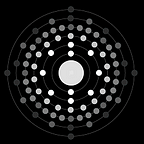Non-Exclusive Reality.. what do you mean?
What is real? What is unreal?
Knowing the difference makes you sane and sound — or not. Yet, today it is largely an irrelevant skill. We are better off knowing which of the realities we are currently in. They are however not mutually exclusive.
The most memorable moment in the Matrix is Morpheus offering the choice between a Blue pill or a Red pill. The Blue pill will keep the illusion of the world created by the machines alive. The Red pill to wake up and look reality in the eye. The alternative here is to live in a fantasy or in reality. Fantasy is bad. Reality is good, however miserable it may be.
There is a better alternative to this though. Both worlds are real, but with different definitions of what is “real”. How is the real reality defined? Physical perception? Physical perception can be replicated by direct stimuli of nerves. Can the only differentiation between fantasy and reality be the misery? Hopefully not!
Pushing the boundaries of reality started only 200 years ago
It is during the second half of the 19th century, that we accepted and started enjoying pushing the boundaries of reality. That is less than 200 years ago. Before that, for 4000 years since the first novel was written on clay tablets, we had entertainment often wrapped in moral tales to avoid being tagged frivolous. Moral tales such as Gilgamesh, Odysseus, Gargantua, Gulliver or MunchHausen.
Kicked off with romanticism, we only recently started writing stories walking the narrow boundary between reality and un-reality. Stories for the sheer fun of it. That spawned the fiction genres we know as horror, science-fiction and et alii. Fiction from Wells to Lovecraft, Tolkien or King.
The thrill was that we, readers, knew what was real and what was not. Reality was as tangible as our seat.
Tangible comes from the Latin “tangere”. Tangere means “to touch”. Sanity itself was defined at the same time largely by our ability to perceive the real world. Think of sayings such as “He is not all there”, “She is away with the fairies” or “He has his feet on the ground”.
Reality was defined by a set of rules and physical laws, such as gravity. But also by manufactured and legal laws. So, a large part of what makes up our reality — its opportunities and constraints — are largely made-up. For good reasons, but made up.
As a token example, there are no “natural” car-driving laws. Yet, we globally mostly abide by similar car traffic rules.
Rules, persistence and numbers
What defined a primary reality was that this allowed large groups of people to function. This regardless whether we had to live with these rules or chose to live with them. That is probably one of the core reason why it was so crucial to be able to understand which sets of rules applied and which did not. Basically, rules to understand what made reality. Rules, persistence and numbers. That is a rough and ready definition of reality.
What happens if you are not “all there” in the reality? You live in your own fantasy world, with your own made-up rules. That is an un-reality. And, so far, many rules were simply unescapable. Even secluded communes and the very best grade of hallucinogenic mushrooms cannot cancel gravity. So there was a sense that we all share a common reality. The idea was that an alternative reality is not shared. It can’t be shared.
That is outdated. It it is not anymore necessarily or literally true.
There exist just grades or shades of “reality”
Each digital reality has an accepted set of rules. These digital rules are clear, fixed and persistent. They also share within the community technological “laws” similar to the physical laws, as well as manufactured ones. Ruling social behaviours in the digital space is a good example. These digital communities live by these rules in sustainable realities. We are talking about evolving and mutating, hence living ecosystems sustained by technologies. These digital ecosystems are replacing other perceptions and work with quasi instant communications.
Defining the digital world as “unreal” seems more and more based on political, philosophical, moral or even religious decisions.
Facts are that there are just grades or shades of “reality”. If you accept that these different realities actually exist and live, you can see that all these realities share some common elements. Common elements starting with a time frame, but of course also a part of the individual.
Therefore, they are not anymore exclusive realities. All realities co-exist. And this includes the Reality. We live in a non-exclusive reality.
There was never a better time to be with the Fairies. Not away with them!
